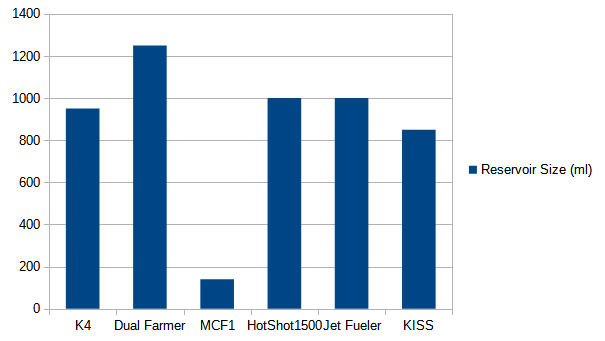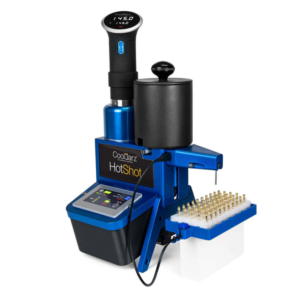01Sep

Hey everyone! Today we will be comparing six of the industry’s best semi automatic cart filling machines. There are so many options to choose from! We’ve collected the most relevant data and displayed it in graphs just for you. We’re going to highlight price, carts per hour, reservoir capacity, and even a production cost calculation. After that, we’ll look at each filler individually. First, let’s see what our lineup looks like.




When choosing equipment for any operation, minor or major, cost is an extremely important factor. There’s a larger variability in price in the semi automatic class of cartridge fillers than any other class. Their output has a pretty large difference too. Speaking of output, let’s look at another important facet of cart filling machines.

No matter how big your operation is, carts per hour is a determining factor in how much it will cost you to fill those carts. This will be a huge part of the production cost calculation, as you’ll see below.

The larger the reservoir, the fewer times an employee needs to stop their task to refill it. This increases the efficiency of the filler.

Our methodology behind this calculation is simple. We first take 250,000 carts and divide them by the low end of the approximate carts per hour. We then multiply that number by the cost of an hourly employee’s wage ($20/hr). The new number represents how much it would cost to pay an employee to fill 250,000 carts. Next, we add the price of the cart filler to this estimation, as most cart fillers last around that long before needing maintenance. Here’s an example of the formula with the K4: ((250,000/2000)x20)+4000=$6,500.
| Filler | Reservoir Size | Carts per Hour | Price | Cost per 250k Carts |
| K4 | 950 | 2000-3000 | 4000 | $6,500 |
| Dual Farmer | 1250 | 4000-5000 | 5000 | $6,250 |
| Thompson Duke | 140 | 1000-1600 | 8000 | $13,000 |
| HotShot1500 | 1000 | 1500 | 16,900 | $20,233 |
| Jet Fueler | 1000 | 2000-3000 | 10,000 | $12,500 |
| KISS | 850 | 2000-3000 | 7,000 | $9,500 |
| Filler | Accuracy (MG) | Reservoir Material | Line Material |
| K4 | 5 | 304 SS | 304 SS |
| Dual Farmer | 2.5 | 304 SS | FEP |
| Thompson Duke | 5 | Glass | Silicone |
| HotShot1500 | 50 | Aluminum | 304 SS |
| Jet Fueler | 2.5 | 304 SS | FEP |
| KISS | 5 | 304 SS | Silicone |
Cart fillers are always looking for the best new carts to fill. Variability in cart size is found in this constantly changing cart market. First, the HotShot1500 can fill in increments of .25ml. The K4, Thompson Duke MCF1, and the KISS filler have increments of 0.025ml. Then the Dual Farmer and Jet Fueler can fill in .0125ml increments. We recommend at least 0.025ml increments. Materials are another important factor in your cart filler. Both the reservoir and the line material must be made of a material that won’t leech into the reactive oils found in most filler’s mixtures. You do not want silicone to contact your oil at any time!
Cart Farm’s K4 cart filler is a plug and play semi-auto filler, unlike their CF250 and CF1000 cart fillers. The system utilizes the same dispenser and working principal with a few key differences. The fully stainless steel reservoir and fluid path are built to last and go great with the fully analog electronics. All of these components together make maintaining the filler a breeze. You can expect the same high performance to cost ratio as any other Cart Farm filler with much more ease of operation.
Cart Farm’s Dual Farmer is essentially two HSW dispensers running off of the same reservoir. This allows for a dual fire system that doubles productivity. The Dual Farmer is very high-performing for a fraction of the price of its competition.

The Thompson Duke MCF1 is best fit for a smaller operation. The reservoir size limits the productivity of this filler. Something to note is the silicone line material. Just like plastic, it’s reactive with terped distillates and will end up in your product.

CoolJarz HotShot1500 is the most expensive filler on this list, and we aren’t sure why. It has about the same reservoir size and output as the Jet Fueler but costs almost $7,000 more. Their system also requires a particular size foam tray to be operable. The material of the reservoir is aluminum, which is a poor choice for terped distillate.

The Jet Fueler delivers the same features as the Vape-Jet at a fraction of the cost. The Jet Fueler is also much faster than the Vape-Jet, delivering filling speeds similar to those seen in class competition like the K4 and KISS filling machines. The Jet Fueler uses proper materials to handle cannabis oils, and a unique rotating valve instead of the ball and spring check valves of other in-class fillers. This delivers better performance with thca heavy blends but worse performance with unterped, high purity and high viscosity distillates.

From our calculations, the KISS filler performed relatively well. Their reservoir size, carts per hour, and price are all pretty solid. If only this filler didn’t have silicone lines! If they were made of a safe material, we would be able to recommend it. Silicone in your end material is not acceptable.
Blending is a simple process, but has the potential to make or break a product. Cart Farming is an art... read more
There are many types of carts out there, and one may get overwhelmed by all the nomenclature and jargon. Here... read more
Heating one’s starting material for blending is the first step to producing an oil blend. Due to the natural high... read more

Hey everyone! Today we will be comparing five of the industry's best manual cart filling machines. There are so many... read more

Hey everyone! Today we will be comparing five of the industry's best automatic cart filling machines. There are so many... read more

Leave a Reply